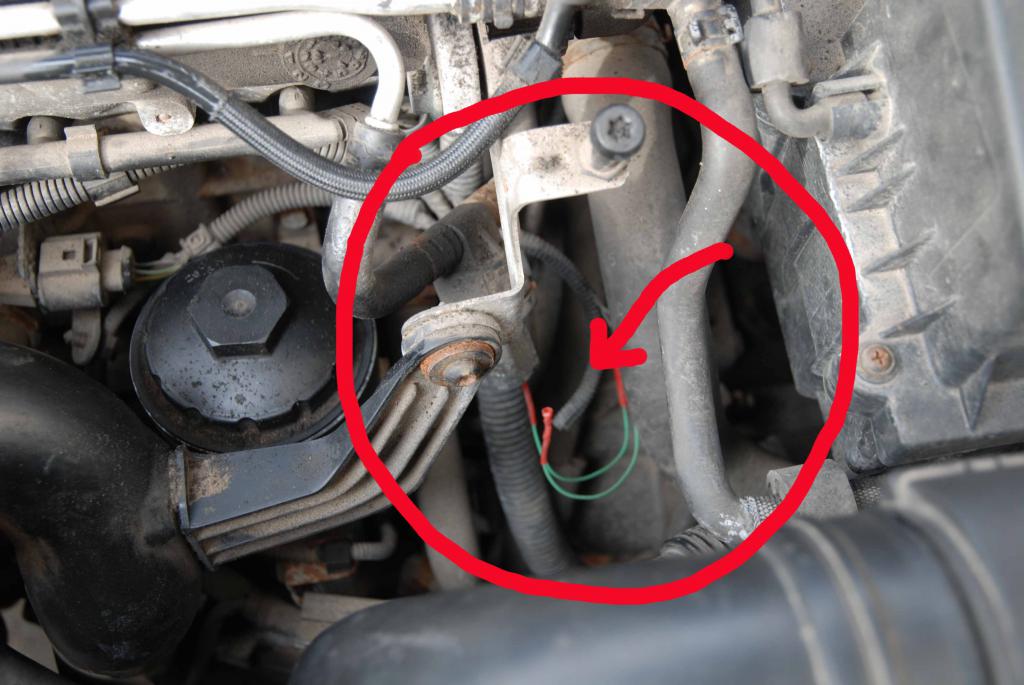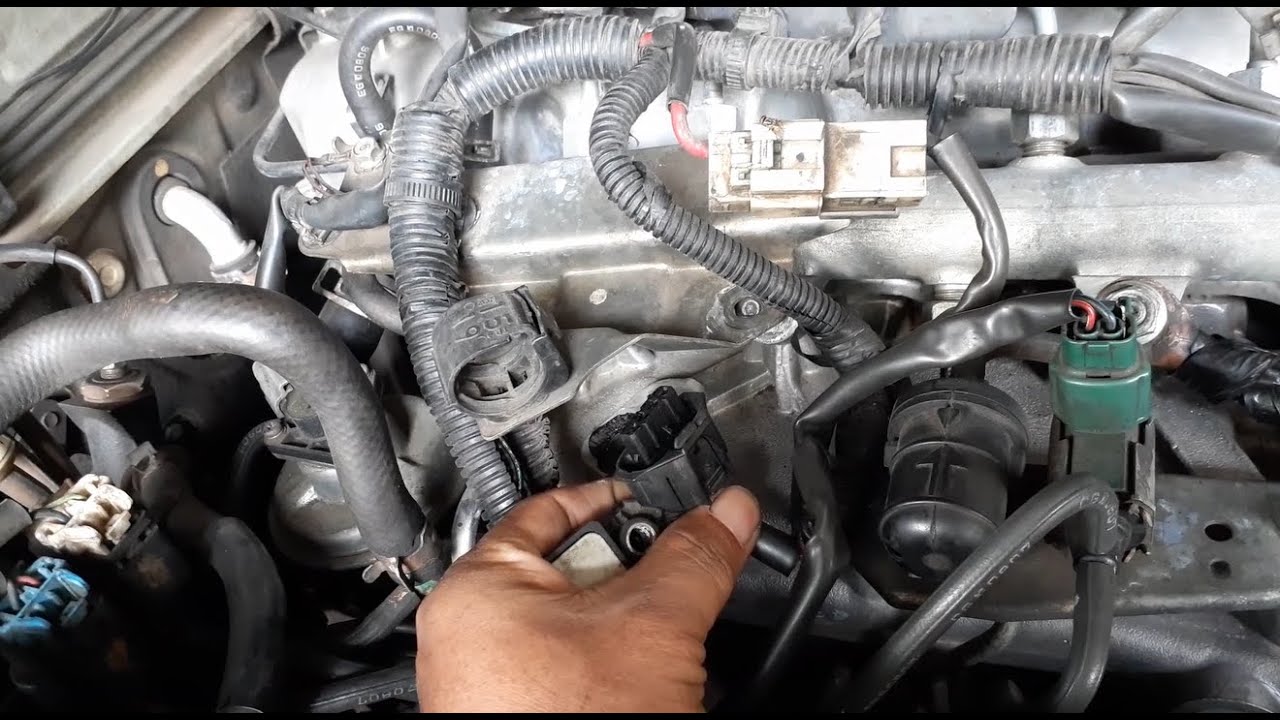Are you looking for a comprehensive guide to testing a Ford Ranger Map Sensor? If so, you’ve come to the right place. This blog post will provide an in-depth explanation of how to effectively and safely diagnose any issues with your Ford Map Sensor. We’ll cover how to identify a faulty sensor, the tools you’ll need to get the job done, and how to properly test the Ford Map Sensor. So, whether you’re a seasoned professional or a car enthusiast just getting started, this guide will provide you with the information and resources necessary to test your Ford Map Sensor.
What Is A Ford Ranger Map Sensor Issues?
A Ford Ranger Map Sensor issues refer to problems with the sensor that measures the intake manifold pressure of your vehicle. This pressure reading helps your car’s engine control unit determine how much fuel and air are needed for efficient combustion. When the Map Sensor fails, it can cause your vehicle to run rough, stall, or misfire. The check engine light may also come on, indicating a problem with the sensor.
If you suspect your Ford Map Sensor has issues, it’s crucial to have it checked by a professional technician. Signs of a Faulty Ford Map Sensor can include engine hesitation, loss of power, poor fuel economy, and even engine damage if left untreated. A common symptom is a lack of power, which occurs when the Map Sensor fails to deliver the correct signals to the engine control unit.
Other issues may include poor idling, stalling, or rough running. In some cases, a faulty Map Sensor can cause the check engine light to come on and store codes that may indicate a problem with the sensor. It’s important to address any Ford Map Sensor issues as soon as possible to avoid further damage and costly repairs.
Signs Of A Faulty Barina Camshaft Sensor
The Barina Camshaft Sensor is a crucial component of your vehicle’s engine management system, responsible for measuring the intake manifold pressure and feeding it back to the engine’s control module. However, issues can arise with this sensor, resulting in a malfunctioning engine.
One of the most common issues is with the Camshaft Sensor, which can also cause problems for the Camshaft Sensor. Some of the most noticeable signs of a faulty Camshaft Sensor include an illuminated check engine light, erratic or rough idling, poor acceleration, and even stalling or refusing to start.
If you notice any of these symptoms, it’s essential to get your vehicle inspected as soon as possible to avoid further damage to the engine. Ignoring these Ford Map Sensor issues can cause more significant issues down the line and lead to costly repairs.
In the next section, we will discuss how to test your Ford Map Sensor to determine if it’s causing these issues. To test your Ford Map Sensor, you’ll need a digital multimeter. First, locate the sensor on your vehicle and disconnect the wiring harness. Then, set your multimeter to measure voltage and connect it to the sensor’s terminals. Start the engine and check the voltage reading.
To replace a faulty sensor, start by disconnecting the battery. Then, remove the old sensor from the engine and install the new one, making sure to connect the wiring harness correctly. Reconnect the battery and start the engine to ensure the new sensor is working correctly.
How To Test An Astra Camshaft Sensor?
The Astra Camshaft Sensor, also known as the crankshaft position sensor, is responsible for detecting the position of the camshaft and transmitting the information to the engine control module. Just like the Camshaft Sensor, it can also malfunction due to wear and tear, electrical issues, or exposure to extreme conditions.
If you suspect that your Camshaft Sensor is faulty, you can perform a diagnostic test using a multimeter. Here’s how to do it:
- Disconnect the battery: To avoid any electrical accidents, make sure to disconnect the negative battery cable from the battery terminal before starting the test.
- Locate the sensor: The Camshaft Sensor is usually located near the timing belt cover or at the rear of the engine block. Refer to your vehicle manual or consult a professional if you’re not sure where to find it.
- Remove the sensor: Use a socket wrench or a specialized tool to remove the sensor from the engine block. Make sure to keep track of any bolts, washers, or connectors that you remove.
- Set your multimeter: Switch your multimeter to the ohm setting and set it to measure resistance in the range of 500-700 ohms. This is the normal resistance range for most Astra Camshaft Sensors.
- Test the sensor: Connect the leads of your multimeter to the two pins of the Camshaft Sensor. If the resistance reading is within the normal range, the sensor is functioning properly. If not, you likely have a faulty sensor.
If you’re experiencing Ford Map Sensor Issues or Camshaft Sensor problems, the steps for testing those sensors may differ. Always refer to your vehicle manual or consult a professional mechanic before attempting any repairs or maintenance.
Steps For Replacing A Faulty Ford Map Sensor
If you have identified Ford Map Sensor Issues and need to replace the faulty sensor, don’t worry – it’s a relatively simple process. Here are the steps to follow:
- Gather the necessary tools: You’ll need a set of socket wrenches, a screwdriver, and pliers.
- Locate the map sensor: The sensor is typically located near the engine’s intake manifold. Refer to your owner’s manual for specific instructions on locating the sensor in your Ford Ranger.
- Disconnect the sensor: Using your pliers, gently wiggle and pull the electrical connector from the sensor.

- Remove the mounting screws: Use a socket wrench to remove the screws that hold the map sensor in place.
- Install the new sensor: Carefully position the new sensor in place and replace the mounting screws.
- Reconnect the electrical connector: Ensure that the connector is securely in place and clicks into the sensor.
- Test the sensor: Start your engine and test the sensor to make sure it’s working correctly.
It’s essential to make sure you have identified the correct sensor for your vehicle and that you have purchased a high-quality replacement sensor. If you’re unsure, consult with a qualified mechanic or refer to your owner’s manual for more information.
In some cases, the Camshaft Sensor can also cause issues similar to a faulty map sensor, so be sure to rule out this component as a potential cause of the problem.
Tips For Maintaining A Ford Map Sensor
Maintaining your Ford map sensor is essential for ensuring its proper functioning and preventing any potential issues down the road. Here are some tips for keeping your map sensor in good condition:
- Regularly clean your sensor – Dirt and debris can accumulate on the surface of the sensor over time, causing it to malfunction. Make sure to clean it periodically with a soft brush or cloth to prevent this.
- Check for loose connections – Loose or corroded connections can cause problems with your map sensor, so it’s important to check them periodically and tighten or clean them if necessary.
- Use quality replacement parts – If you need to replace your map sensor, make sure to choose a high-quality replacement part that’s compatible with your Ford Ranger. Using a cheap or inferior part could cause more problems down the line.
- Watch out for Camshaft Sensor issues – If you’re experiencing issues with your Ford map sensor, it could be related to a faulty Camshaft sensor. Make sure to check both components if you’re having problems.
By following these tips and keeping up with regular maintenance, you can ensure that your Ford map sensor remains in good condition and functions properly for years to come.
How To Choose the Right Map Sensor?
If you’re in the market for a new Map Sensor for your Ford Ranger, it’s important to choose the right one. First, make sure to identify any Ford Map Sensor Issues you may have experienced. This will help determine the type of sensor you need.
Secondly, don’t get confused between different types of sensors. For example, the Camshaft Sensor may look similar, but it is not the same as a Map Sensor. Double-check the manufacturer’s specifications to ensure you’re buying the correct part.
It’s also essential to choose a quality sensor from a reputable brand. Look for sensors made from durable materials that will last longer and resist wear and tear. Don’t be tempted to buy a cheaper, low-quality sensor just to save a few bucks, as this could end up costing you more in the long run.
Lastly, don’t forget to verify the compatibility of the Map Sensor with your Ford Ranger. Always check the model and year of your vehicle to ensure the sensor you’re buying is the correct fit.
Conclusion
In conclusion, the Ford Map Sensor is a crucial component of your vehicle’s engine system that can sometimes experience issues. Symptoms of a faulty Map Sensor can be similar to those of a Camshaft Sensor, so it is important to correctly diagnose the problem before taking any steps to repair or replace it. When it comes to choosing the right Map Sensor for your vehicle, it is always best to consult with a professional to ensure that you are making the right choice.
| Other Good Articles to Read |
| Blogs Rain |
| Cme Blog Spot |
| Garcias Blogs |
| Guiade Blogs |
| Blogs-Hunt |
| Impact-Blog |
| Smarty Blogs |
| Ed Blog |
| Mo Blogs |
| Blogs Em |
| Blogs T |



